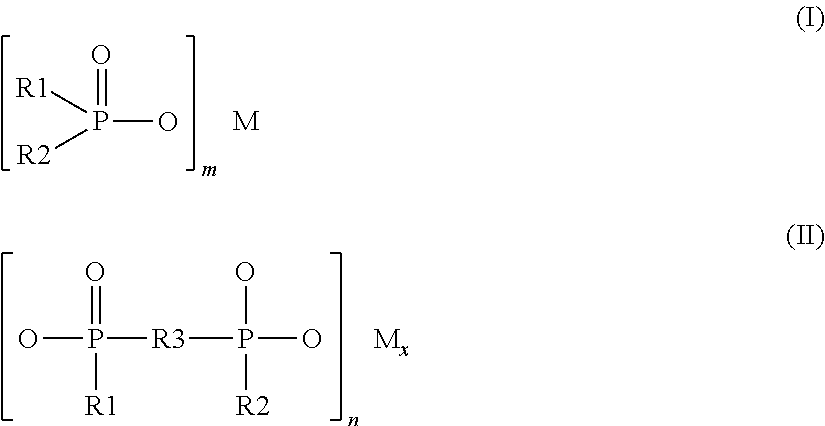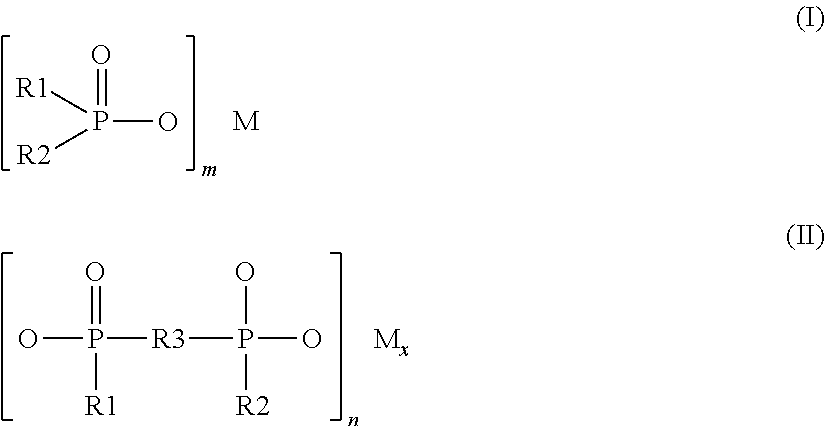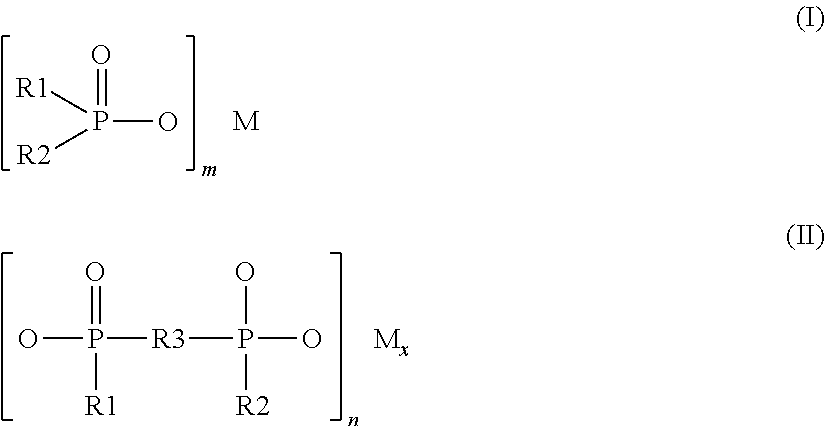Flame-protected, partially aromatic polyamide molding compounds
a polyamide and partially aromatic technology, applied in the field of polyamide molding compositions, can solve the problems of inability to use molding compositions of this type for forming, inability to accept corrosion on processing components in contact with the melt, and inability to meet the requirements of processing plant metal parts in contact, etc., to achieve the effect of reducing the amount of corrosion wear
- Summary
- Abstract
- Description
- Claims
- Application Information
AI Technical Summary
Benefits of technology
Problems solved by technology
Method used
Image
Examples
Embodiment Construction
[0166]Examples will be used below to provide further explanations of, and support for, the invention. The examples discussed below serve only for the purposes of explanation of, and support for, the invention, and are not intended for use to restrict interpretation of the invention as described in general terms at an earlier stage in this text, and also defined in the claims.
[0167]The examples use the following starting materials for producing molding compositions of the invention:
Component (A)
[0168]Polymer 1: Nylon-6,T / 6,6 wherein the molar ratio of terephthalic acid to adipic acid is 55:45, with melting point 310° C.[0169]Polymer 2: Nylon-6,T / 10,T with melting point 295° C.[0170]Polymer 3: Nylon-6,T / 6,I with melting point 325° C.
Component (B)
[0171]Glass fiber 1: Standard glass fiber (round) for polyamides, fiber length 4.5 mm, diameter 10 μm[0172]Glass fiber 2: Flat glass fiber from Nittobo (JP), wherein the lengths of the main cross-sectional axes are about 7 and 28 μm, the ratio...
PUM
| Property | Measurement | Unit |
|---|---|---|
| Tm | aaaaa | aaaaa |
| melting point | aaaaa | aaaaa |
| mol % | aaaaa | aaaaa |
Abstract
Description
Claims
Application Information
 Login to View More
Login to View More - R&D
- Intellectual Property
- Life Sciences
- Materials
- Tech Scout
- Unparalleled Data Quality
- Higher Quality Content
- 60% Fewer Hallucinations
Browse by: Latest US Patents, China's latest patents, Technical Efficacy Thesaurus, Application Domain, Technology Topic, Popular Technical Reports.
© 2025 PatSnap. All rights reserved.Legal|Privacy policy|Modern Slavery Act Transparency Statement|Sitemap|About US| Contact US: help@patsnap.com



